LANSING, Ill. (May 16, 2024) – From a lonely Potawatomi on horseback in the 1800s, to the thousands of vehicles today, Ridge Road has quite a history.

Native American travelers
Ridge Road, or 182nd Street, runs east-west through the center of Lansing, following an ancient shoreline of Lake Michigan. An actual ridge, the road rests atop a 25-foot-high elongated berm of sand and gravel deposited by the receding lake. The ridge was once a prominent trail traversed by tribes native to the Chicago region.
Evidence of Native American life in the Lansing area is plentiful, especially at the Hoxie Farm Site west of the village, which dates back to around 1400. The Potawatomi, who were the last Native Americans to occupy the area, departed by the 1830s.
Dutch and German farmers
By the mid 1840s, Dutch and German settlers had immigrated to this area and determined that the sand ridge would serve well as a building spot for houses, barns, orchards, and gardens. The biggest challenge was that when it rained, the creeks and rivers would overflow. With no outlets for the water to drain, the land became waterlogged, making it difficult for cultivation.
The farmers living along the trail from Thornton along the ridge to Hobart began digging. In 1863 they dug the “Big Ditch” from Dyer to Highland, followed by Hart’s Ditch and Burn’s Ditch. After Cook County connected the Grand Calumet River with the Illinois and Michigan Canal in 1868, the water level was reduced by 10 feet and the flooding problem was solved.
Sand and sidewalks
The trail area was primarily sand. After the Great Chicago Fire in 1871 the farmers saw an opportunity to send sand to help rebuild Chicago. Lansing had plenty of sand and had the means to get the product to Chicago because the Pennsylvania Railroad had laid tracks in 1861, including a side track along the ridge. (Those tracks are now the Pennsy Greenway bike trail.) Men shoveled the sand onto flat cars on the side track, moved it to the main line, and sent it off to Chicago.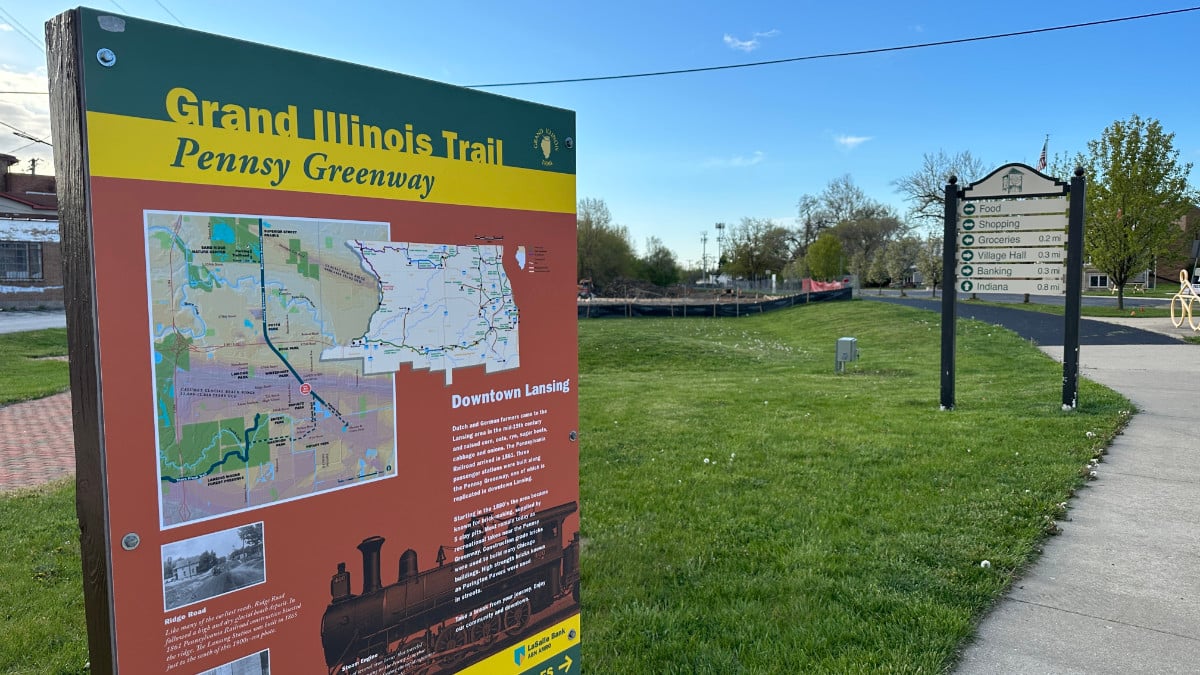
Mrs. Theresia Rutschann recalled the earlier days in an article in The Times on August 16, 1939. She was 80 years old at the time and had lived in Lansing for 45 years. She said, “Forty years ago (about 1899) Lansing had just a few houses. The sidewalks were wooden boards sunk in the sand. Ridge Road was merely a trail, hardly passible.”
Specifications for the wood sidewalks were introduced by resolution on June 5, 1894:
“New sidewalks shall be constructed under the direction and subject to the approval by the acting commissioner and shall be five feet and four inches in width of two-inch Pine Plank, laid crosswise cut to a line on both edges, the inner edge to be 10 inches distant from the front line of abutting lots or land: said planks shall be surfaced on the upper side and shall not be over eight inches in width and shall be supported by three beaming pieces (or stringers) of two-by-six pine plank, which shall be supported by good substantial blocks or stone supports, the whole shall be properly nailed with 20 penny nails and lumber used shall be of the grade called ‘Common Number One.’”
Ridge Road remained a simple trail until 1900 when it was ‘completed.’ In reality, the Village just applied crushed stone to the rutted road bed.
Tragedy
It wasn’t until 1915 that Ridge Road became a concrete roadway, Lansing’s first. It was paved all the way from State Line to Torrence Avenue. Tragically, a death occurred in the process. The concrete was poured by Fred Lorenz’s company, and workers used a team of horses to pull a three-ton roller over the poured concrete. Around 4 p.m. on April 14, something spooked the horses, and they bolted and knocked 65-year-old Julius Raasch to the ground. He fell in the path of the roller and was crushed. Raasch was carried to a nearby saloon owned by his son, where he succumbed to his internal injuries before Dr. Potts, Lansing’s first doctor, arrived.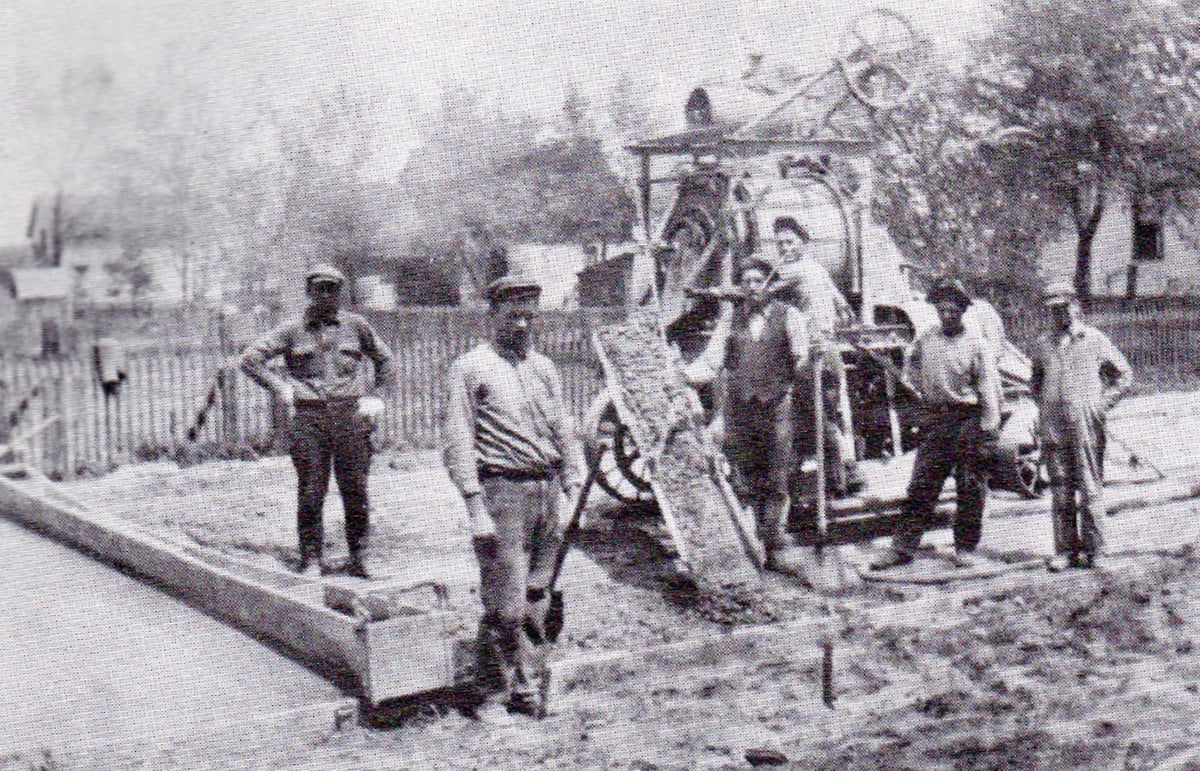
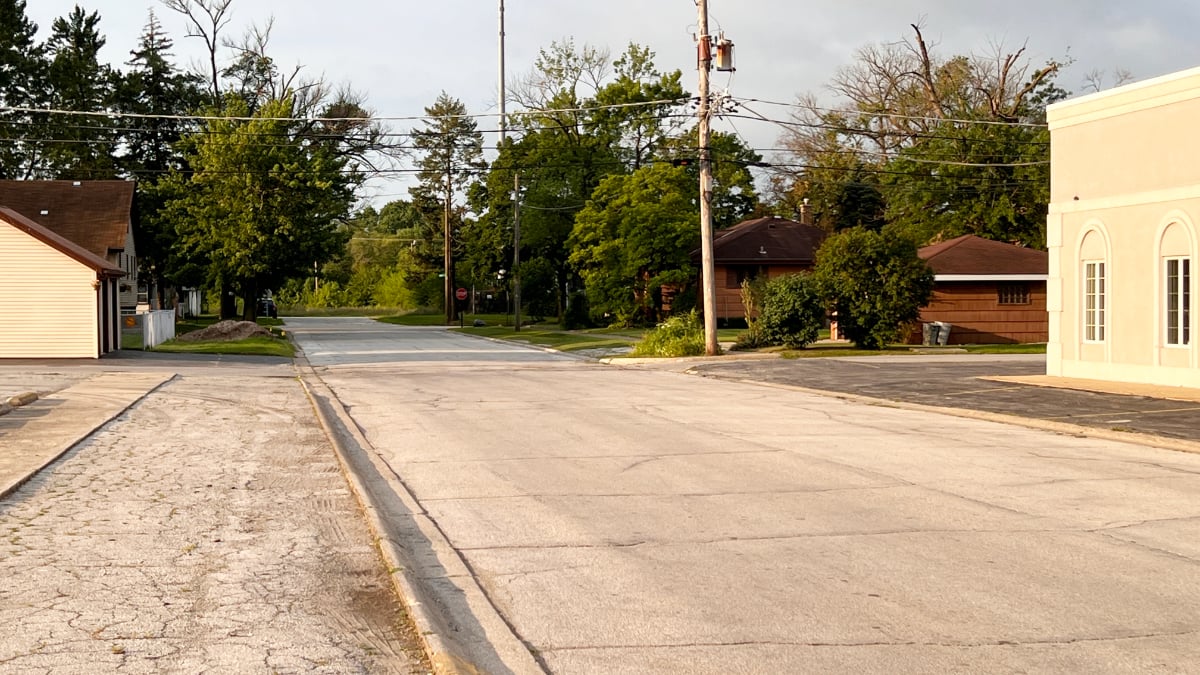
Prior to this paving project, according to a photo from the Koopman collection published in the Lansing Centennial album, Indiana Avenue was the main road into Oak Glen.West of Torrence, Ridge Road remained unpaved for a while and was isolated enough to be known as “Lovers Lane.” Even today that section of Lansing retains its more rural, agricultural character.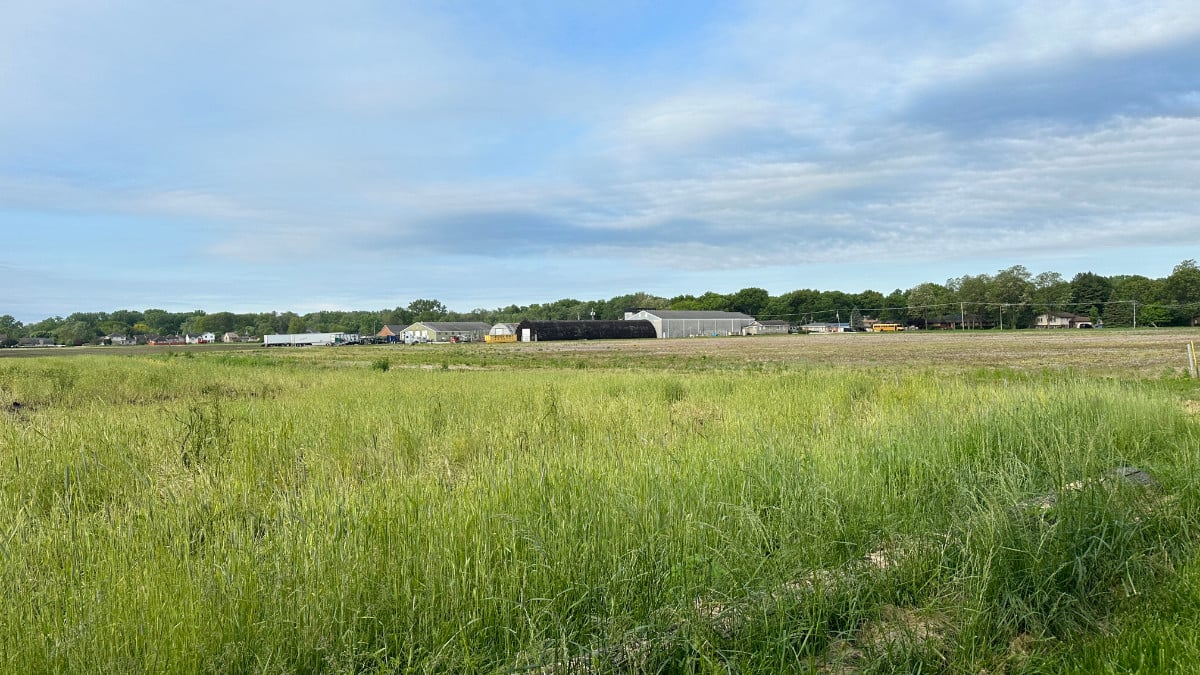
From horses to “horseless carriages”
John Ton was the first Lansing resident to purchase a car — a three-wheeler, which he soon traded in for a four-wheeler. The local farmers weren’t impressed. Every time Ton was about to pass a horse and wagon, the farmer had to get out of his wagon to hold the horses. But they could laugh when they passed Ton, who spent a lot of time either cranking or pushing his modern machine.
By 1929 Lansing had a few more of those annoying horseless carriages, and the first speed limit signs went up along Ridge Road.
More people, wider roads
During the early 1920s Lansing saw huge growth in both business and residents. Gostlin, Meyn, and Hastings platted the largest subdivision thus far in the entire region. The boundaries were Ridge on the north, 186th Street on the south, Chicago Avenue on the east, and School Street on the west.
Enticement to purchase a home promised, “Each lot is 100 feet wide and 231 feet deep covered with black garden soil three feet thick for $400. Lansing’s Pure Mineral Water, all you want by simply turning on a faucet in your home. Electricity is now available. Fast motor bus transportation is furnished by both the ‘Red’ line and the ‘Blue’ line. Great big white ash trees, more than 50 years old, front Ridge Road.”
At a November 22, 1939, board meeting a resolution was passed to ask Northern Indiana Public Service Company and the Illinois Bell Telephone Company to remove utility poles along Ridge Road from Torrence to State Line Avenue to permit widening of Ridge Road in the following year.
The following year on March 12, 1940, the board drafted a resolution that would start the state highway machinery to make the improvements. Ridge Road would go from 22 feet to 40 feet in width. The depressed shoulders that caused drivers to lose control of their vehicles in the ruts would be eliminated, thereby removing the traffic hazard. In addition, a 10-foot slab was installed along both the south and north sides of the road. The improvement was a Cook County Highway project.
Other improvements
Two years later traffic was so heavy that only parallel parking was allowed. Parking meters were installed in 1951. Crossing gates and flasher lights were added to the Pennsylvania Railroad crossing in 1959. In 1960 snow route signs were posted, which meant for the first time there was no parking on the street after a one-inch snowfall. In 1961 outdoor phone booths lined Ridge Road.
The Blue Star Memorial Highway Marker
A Blue Star Memorial Highway Marker was placed on the corner of Henry Street and Ridge Road in 1979 in memory of Lansing’s service men and women. The marker was named for the Blue Star Service Banners that during WWII hung in the front window of homes with a family member serving in the military. A gold star flag took its place when the member was killed in action.
Lansing’s Blue Star marker was moved (with proper permission) when it was replaced by the Firefighters Memorial Statue that was dedicated in 2010. However, people forgot where they had stored the marker, and it was missing for a long time. After American Legion members asked about it, the marker was relocated and restored. The Blue Star Memorial Highway Marker was re-installed on the grounds of American Legion Edward Schultz Post #697 in 2017.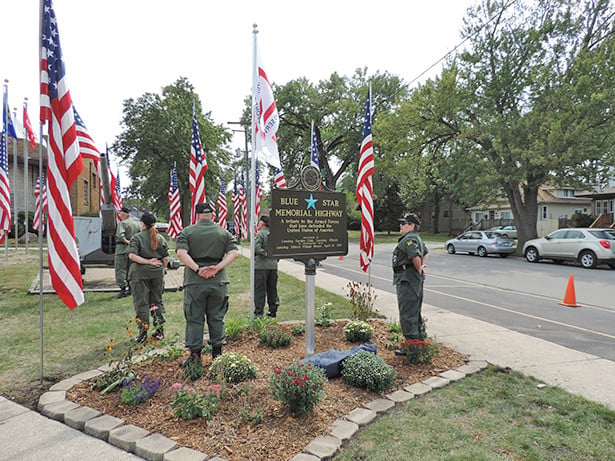
Continued construction
On January 1, 1986, Lansing gained full maintenance responsibility for 182nd Street at the eastern extension of Ridge Road west of Torrence in what was Oak Glen. It had previously been the responsibility of Thornton Township.
For years Lansing had sought township improvements to the road west of Torrence Avenue to Clyde Avenue but none took place. Now it became the responsibility of Lansing, and they began researching the cost of improvements to the dangerous, narrow, ditch-lined road. The project began in May, and by the summer of 1987 that section of Ridge Road was widened to 31 feet and the ditches were filled in.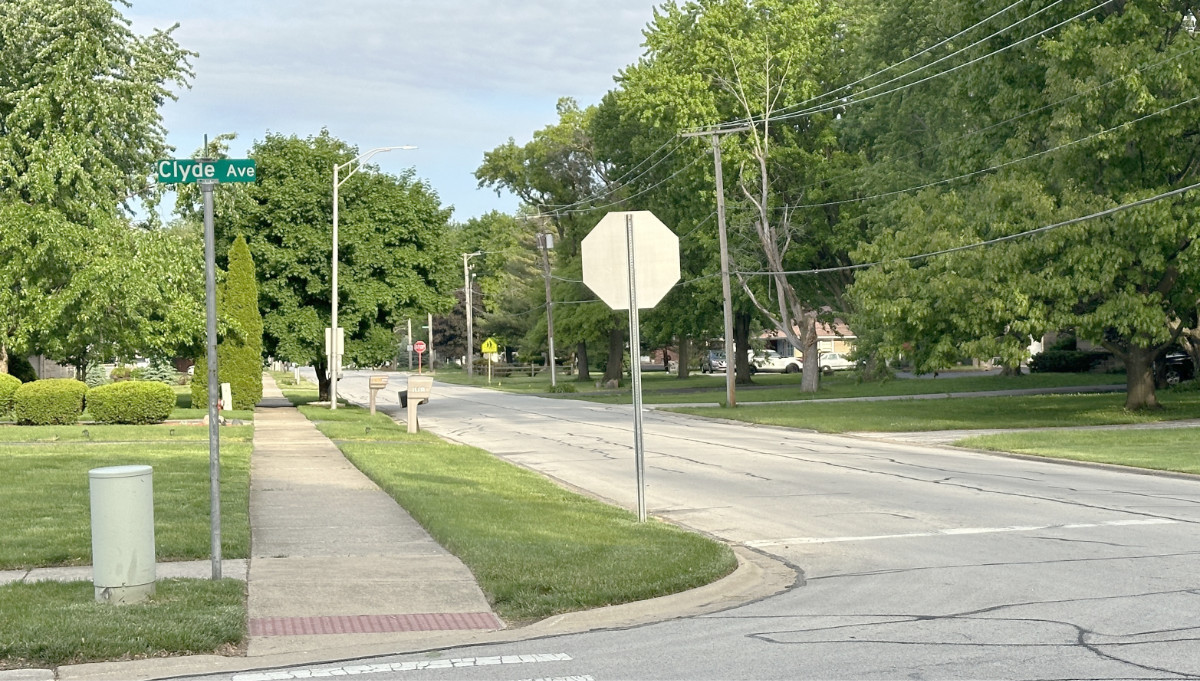
From 1992 to 1994, Ridge Road got another facelift. New sidewalks and curbs were installed, along with large green flower pots, benches, and decorative street lights in the downtown area. At the same time, the street underwent some necessary repair work, and new water mains were installed. This time the Chamber of Commerce, Ridge Road merchants, and the Village worked together on a promotional program to keep shoppers in town during the construction.
Much improvement and repair has been done to historic Ridge Road since it was a sandy trail. And the work continues to this day. Throughout the summer of 2024, Ridge Road will be completely resurfaced from Torrence Avenue east to State Line. Again the Village has worked with businesses, the Chamber, and Lansing Association for Community Events (LACE) to minimize disruption to Lansing’s summer activities.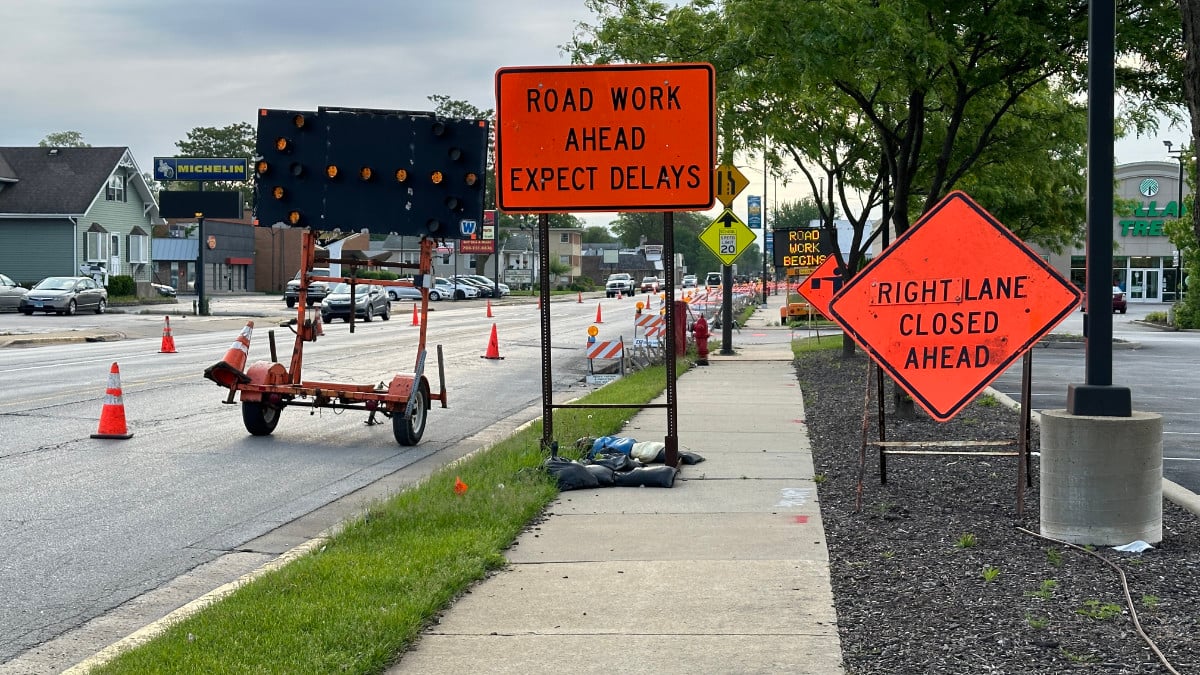


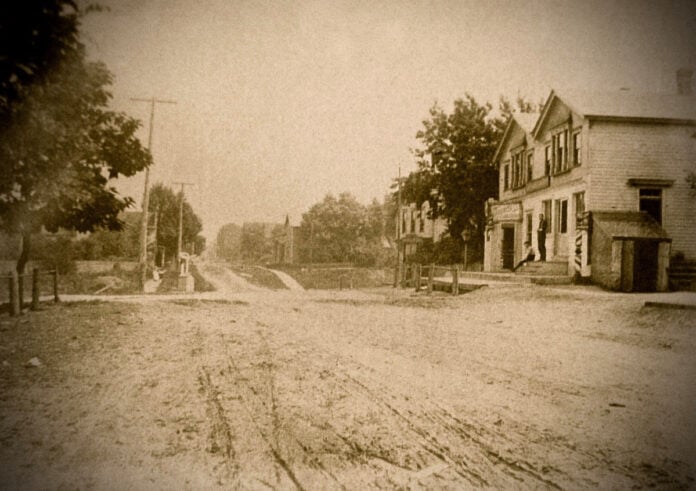
Loved this informative article. Thanks!
Great old pictures of Lansing snd new. showing progress made over the years ! Hats off to the Journal, Lansing Historical Society and Dan Bovno for a job well done !!!!!!!!!!!
Marlene Cook’s local historical articles are always impressive.